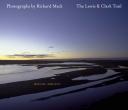This morning USA Book News announced the Best Books 2010 Awards and my book Great Smoky Mountains National Park: Thirty Years of American Landscapes was honored as the Gold Medal Winner for Best Book: Nature Photography 2010.
USABookNews.com, the premiere online magazine and review website for mainstream and independent publishing houses, announced the winners and finalists of THE “BEST BOOKS 2010″ AWARDS (BBA) on October 26, 2010. Over 500 winners and finalists were announced in over 140 categories covering print and audio books. Awards were presented for titles published in 2010 and late 2009.
Winners and finalists traversed the publishing landscape: Simon & Schuster, Penguin/Putnum, Rodale, McGraw-Hill, John Wiley & Sons, Moody Publishers, American Cancer Society, Sourcebooks & hundreds of independent houses contributed to the Best Books Awards competition.
Quiet Light Publishing is honored to have had Great Smoky Mountains National Park: Thirty Years of American, Photographs by Richard Mack, selected as the Best Nature Photography Book for 2010. It is always an honor when others recognize your work, especially when it spans 30 years of photography. To be named the Best Nature Photography book for the year is incredibly humbling.






